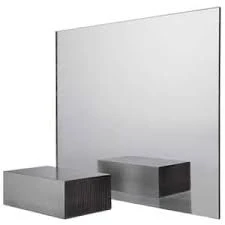

The Importance of Tempered Glass Quality
In the world of architecture and design, tempered glass has emerged as a popular choice due to its strength, safety, and aesthetic appeal. As buildings become increasingly complex and innovative, the role of high-quality tempered glass is more crucial than ever. Understanding the qualities that define quality tempered glass can make a significant difference in both functionality and safety for both builders and occupants.
The Importance of Tempered Glass Quality
Safety is another vital aspect; in the event of breakage, tempered glass shatters into small, blunt pieces rather than sharp shards. This attribute is especially important in environments such as homes, schools, and public buildings, where the risk of injury is a significant concern. Ensuring that tempered glass meets rigorous safety standards is critical in maintaining a safe environment for occupants.

When considering the quality of tempered glass, several factors come into play, including thickness, visual clarity, and the presence of impurities. High-quality tempered glass typically has uniform thickness that provides consistent strength across the pane. Variations in thickness can lead to weak points, making the glass more susceptible to breakage. In terms of visual clarity, the glass should be free of bubbles, distortions, and other imperfections. Such transparency not only enhances the aesthetic value but also ensures natural light penetrates without obstruction.
Furthermore, certification and testing are crucial indicators of quality. Manufacturers should adhere to international standards such as ISO and ANSI, which outline the testing criteria for strength and safety. These certifications validate the quality and integrity of the tempered glass, assuring builders and consumers that the product meets acceptable safety and performance levels.
Additionally, the installation of tempered glass plays a pivotal role in its performance. Even the highest quality tempered glass can fail if improperly installed. It is essential to employ skilled professionals who understand the correct techniques for handling and fitting the glass. Proper support, spacing, and sealing are necessary to maintain the structural integrity of the installation.
In conclusion, the quality of tempered glass is an essential consideration in construction and design. Not only does it contribute to the safety and durability of buildings, but it also enhances aesthetic appeal. By understanding the factors that determine quality, including thickness, clarity, and adherence to safety standards, architects, builders, and consumers can make informed choices. As urban spaces continue to evolve, the role of high-quality tempered glass will undoubtedly become even more significant, reflecting the values of modern architecture safety, strength, and beauty.